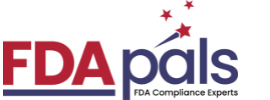An ANDA is a request by a drug manufacturer to market a generic version of an existing brand-name drug. Unlike unique, patented pharmaceuticals, generic drugs are not protected by patents, which means that they can be manufactured by anyone who wants to make them. In order to sell their product, however, the company must first apply to the FDA for approval. This application is called an ANDA—abbreviated from “Abbreviated New Drug Application
The Food and Drug Administration (FDA) approves generic drugs through the Abbreviated New Drug Application (ANDA) process. This article will help you understand how this process works, and what it means for you as a consumer.
ANDA Submission is an essential part of your regulatory approval process. ANDA or Abbreviated New Drug Application is the process required for generic drug approval by the FDA. The entire process is highly complex and requires a considerable amount of time and money. It is a written request to the U.S. Food and Drug Administration (FDA) to grant permission to manufacture and market a specific generic drug.
Who needs ANDA Submission?
Any company who wishes to manufacture and market a specific generic drug in the US market needs ANDA Submission. Once ANDA is approved, your generic drug gets listed in the Orange Book which has all the medicines listed. These medicines have been approved by the US FDA based on their safety, effectiveness, and as low-cost alternatives for general public.
Any mistakes during the entire process will cause a major setback to your ANDA Submission and result in a financial loss for your company. This means you may lose 25% of your application fees and you will have to pay again to file your ANDA submission.
ANDA Process
As an applicant you will have to fill the ANDA submission forms as per the instructions. The FDA no longer accepts paper ANDA submissions. You need to make all ANDA submissions in the eCTD format.
- Once the forms have been filled, it will go in for a review to check if it is complete and can be accepted.
- If not accepted, it gets refused to file letter issued.
- Once accepted, it get reviewed by OGD or CDER for 4 main types of review –
- Bioequivalence Review
- Chemistry / Micro Review
- Request for Plant Inspection
- Labelling Review
- If you fulfil the reviews, the application is then sent to the stage of preapproval inspection.
- Failure to fulfil the bioequivalence review or the chemistry/micro/labelling review will ensure that you get a bioequivalence deficiency letter or a not approvable letter respectively.
- The last stage is to get approved at the Preapproval inspection.
- Non-approval means approval gets deferred and depends on pending satisfactory results.
- Once all the stages are complete, your ANDA submission gets approved and your company is cleared.
How can we help?
With an experience of more than 20 years in regulatory filings for generic drug approvals, FDApals Pharmaceuticals Consultants has an in-depth expertise in each sector’s functional area. Just click on the <button> and connect with our team. We will handle the rest for you and guide you on your compliance requirements including establishment registration, Drug Listing, and GDUFA Self Identification.





